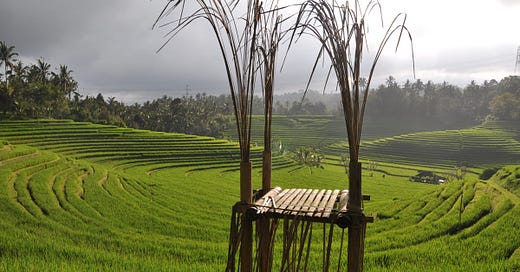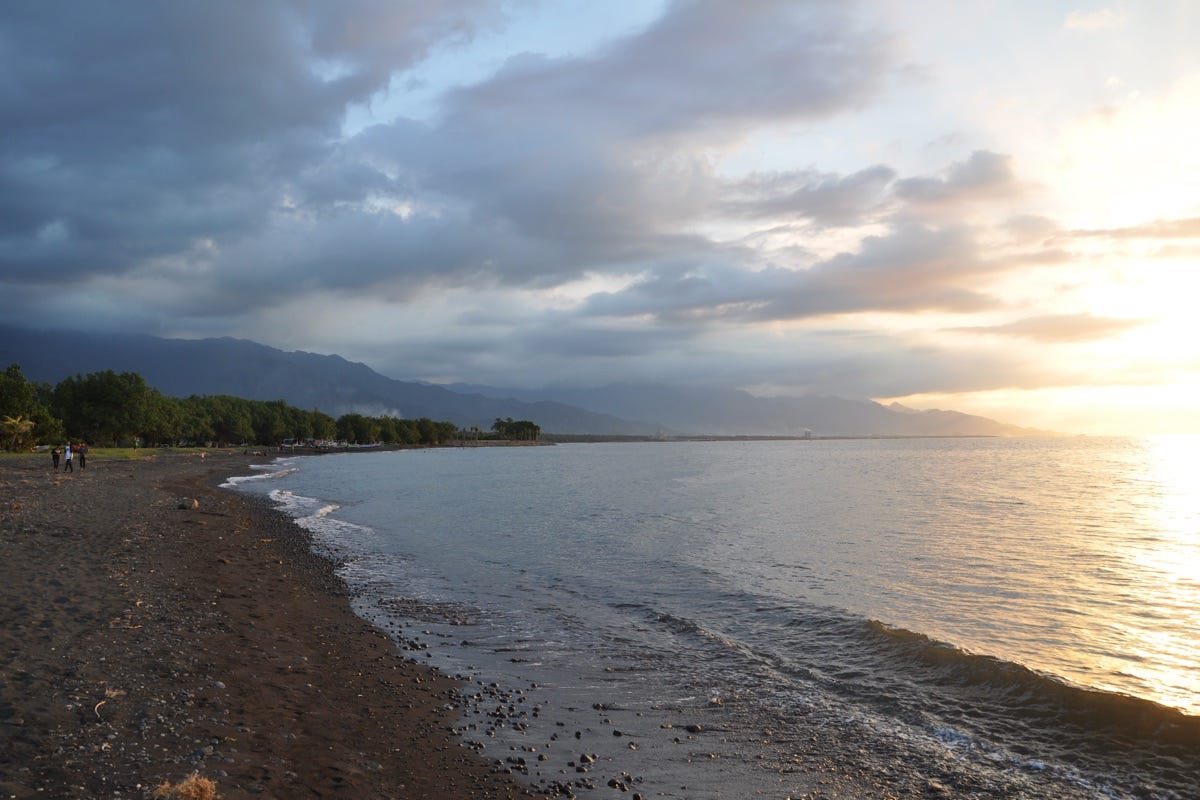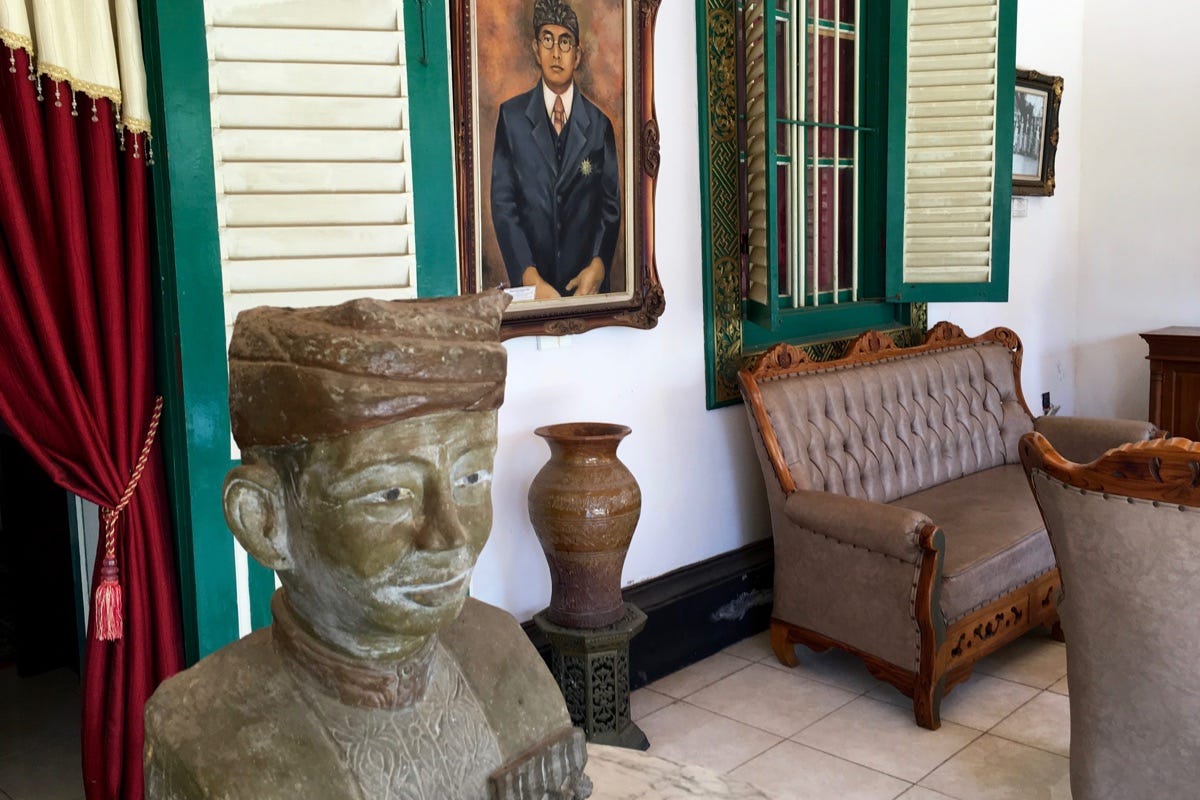A quick word of introduction. My name is Stuart McDonald and this is Couchfish—the perfect tub of ice-cream for the traveller stranded on the couch. The newsletter has both a paid edition which traces a fantasy itinerary through Southeast Asia, and a free one that covers, well, everything else. If you’d like to support me finding more tourism stuff to moan about, please consider becoming a paid subscriber. Thank you.
Indonesia has no shortage of islands. Indeed, depending on what you consider to be an island, there are somewhere between around 15,000 to 17,000 of them. Through a tourism lens, Bali is arguably the best known, and at a bit over 5,000 square kilometres in size, comes in at 15th. Most visitors though—particularly first-timers—restrict themselves to a far smaller patch—the south. Depending on where you draw a line on the map, this patch measures around 450 square kilometres—less than a tenth of the joint.
There’s exceptions to this of course. Some head north to Lovina, east to Amed, offshore to Nusa Lembongan or Penida, or elsewhere. Broad strokes though, most don’t—making it a very big small island. Do a bit of travelling around and you could easily mistake it as one island within another.
It wasn’t always this way though.
Typical coast near where Wallace would have anchored. This somewhere near Seririt. Photo: Stuart McDonald.
It took Alfred Russel Wallace’s vessel some twenty days at sea from Singapore to hit Bali’s northern shores, and this Bali landing, on the 13th of June 1856, was in a way an inconvenience. Makassar was Wallace’s target but he’d been unable to find direct passage and so had a couple of days on the north coast. He was never to return, and reading The Malay Archipelago, his regret at this is obvious.
As was his way, he availed himself to the local hospitality then got busy shooting birds, hoovering up butterflies, and admiring the scenery. Within 48 hours he was gone—a mere drop of time in what was an expansive trip across much of the archipelago—and yet he writes:
“The islands of Bali and Lombok, situated at the east end of Java, are particularly interesting. ... Had I been able to obtain a passage direct to that place [Makassar] from Singapore, I should probably never have gone near them, and should have missed some of the most important discoveries of my whole expedition to the East.”
Even with so little time, what struck him then, has carried forward to today. On visiting a village and its residents, he continues:
“It was a very dull and dreary place; a collection of narrow lanes bounded by high mud walls, enclosing bamboo houses, into some of which we entered and were very kindly received.”
Sound familiar? Then of the sublime beauty of the island, and how the Balinese work it, Wallace writes:
“... I had never beheld so beautiful and well-cultivated a district out of Europe. A slightly undulating plain extends from the sea coast about ten or twelve miles inland, where it is bounded by a fine range of wooded and cultivated hills. ... Everyone of these patches can be flooded or drained at will, by means of a system of ditches and small channels, into which are diverted the whole of the streams that descend from the mountains. Every patch now bore crops in various stages of growth, some almost ready for cutting, and all in the most flourishing condition and of the most exquisite green tints.”
He’s writing of Bali’s subak of course—the irrigation system that earned the island a UNESCO heritage listing. Little was he to know the pressure tourism would place upon it, mostly through over-construction to observe its very beauty.
Wallace may have missed this one. Inland somewhere from Seririt. Photo: Stuart McDonald.
Two days gone, Wallace bade the island farewell and sailed for Lombok’s Ampanan. From there he made time to wax lyrical of the sunrise and sunset views across Bali’s premiere peak Agung and Lombok’s even taller Rinjani:
“We enjoyed superb views of the twin volcanoes of Bali and Lombok, each about eight thousand feet high, which form magnificent objects at sunrise and sunset, when they rise out of the mists and clouds that surround their bases, glowing with the rich and changing tints of these the most charming moments in a tropical day.”
If only Instagram had existed back then, Wallace would have been a power user.
Jokes aside, here we have a guy who, by the time he penned his epic, was about as well-travelled as they grow them in Indonesia. His experience of Bali though, was but for a couple of days in Singaraja and its surrounds. Set, on the western ramp to Bali’s northern-most point, the town is best known as the educational centre for the Balinese political leaders and revolutionaries who would eventually see the colonialists off the island. Today though, it is—at first glance anyway—a hard one to fall in love with.
Sekumpul Waterfall, inland from Singaraja. Photo: Sally Arnold.
Not so with Lovina, a somewhat dated tourist beach strip west of Singaraja which is about as close to mainstream tourism as the north gets. It’s a low-key joint, lined by black sand beaches facing onto calm waters with dolphins aplenty. Up in these parts, the hospitality Wallace mentions continues to this day, as does the scenery. All in all it’s a far less adulterated area than down south.
A common approach is to cast one’s travels further afield as the hot spots ride the tourism rollercoaster to disintegration. It’s easy to view Bali through a lens like this, to write off the south as an over-developed, traffic-clogged hellhole, then to strike further afield, seeking out “the real Bali”—or I guess a real Bali that hasn’t been spoilt yet by catering to tourists.
Once a royal palace, now a family home. Wandering Puri Agung Singaraja in Singaraja. Photo: Sally Arnold.
It is through this sort of process of elimination, that some travellers find themselves in Bali’s north and west. To them, travelling outside Bali’s “inner island” may have seemed like a bit of cutting edge travel, but all they really needed was Wallace’s book—and a map. Forget about getting a new guidebook—instead grab the oldest one you can find.
With this in mind, over the next few days I’m going to be writing of a few of these off-the-inner-island destinations—none of which Wallace will tell you about.
Couchfish is 100 per cent independent and reader-supported. If you’re not already a subscriber, and you’d like to show your support, become a paying subscriber today for just US$7 per month—you can find out more about Couchfish here—or simply share this story with a friend.
Don’t forget, you can find the free podcasts on Apple, Pocket Casts and Spotify as well as right here on Couchfish.
















Share this post